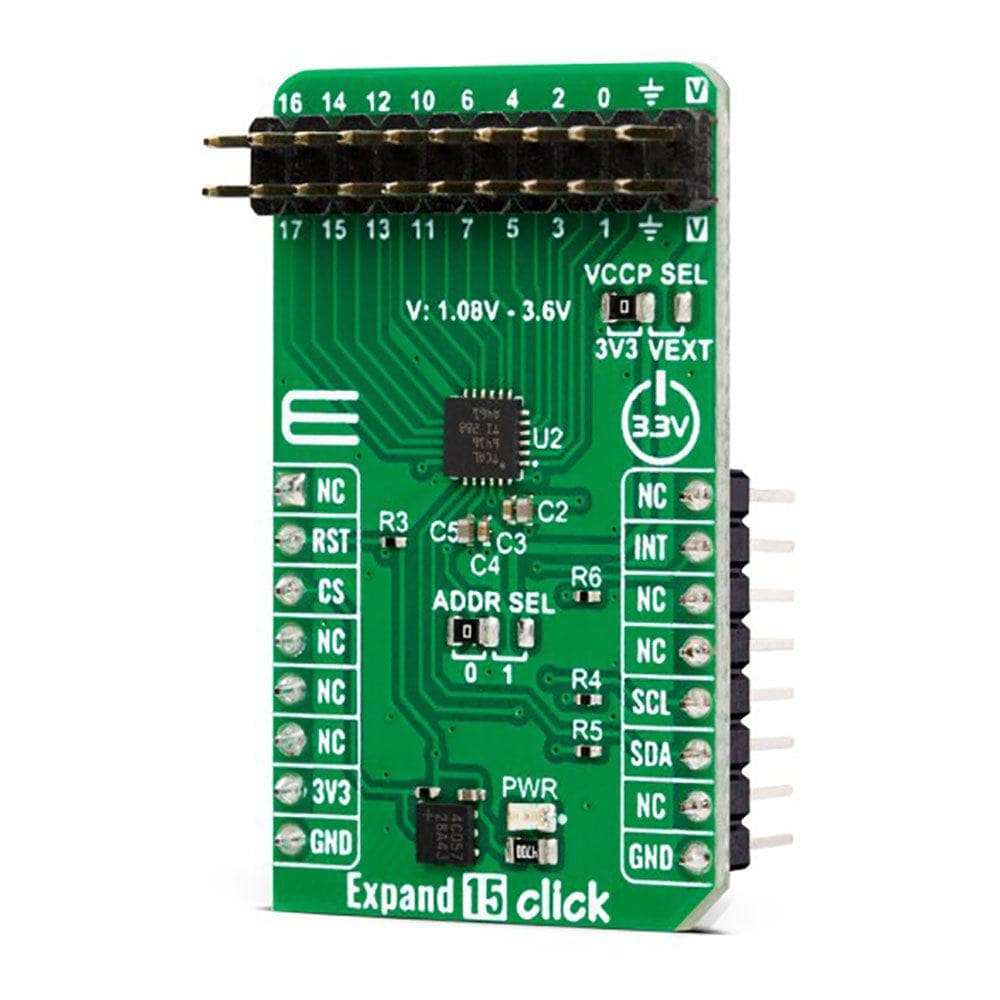
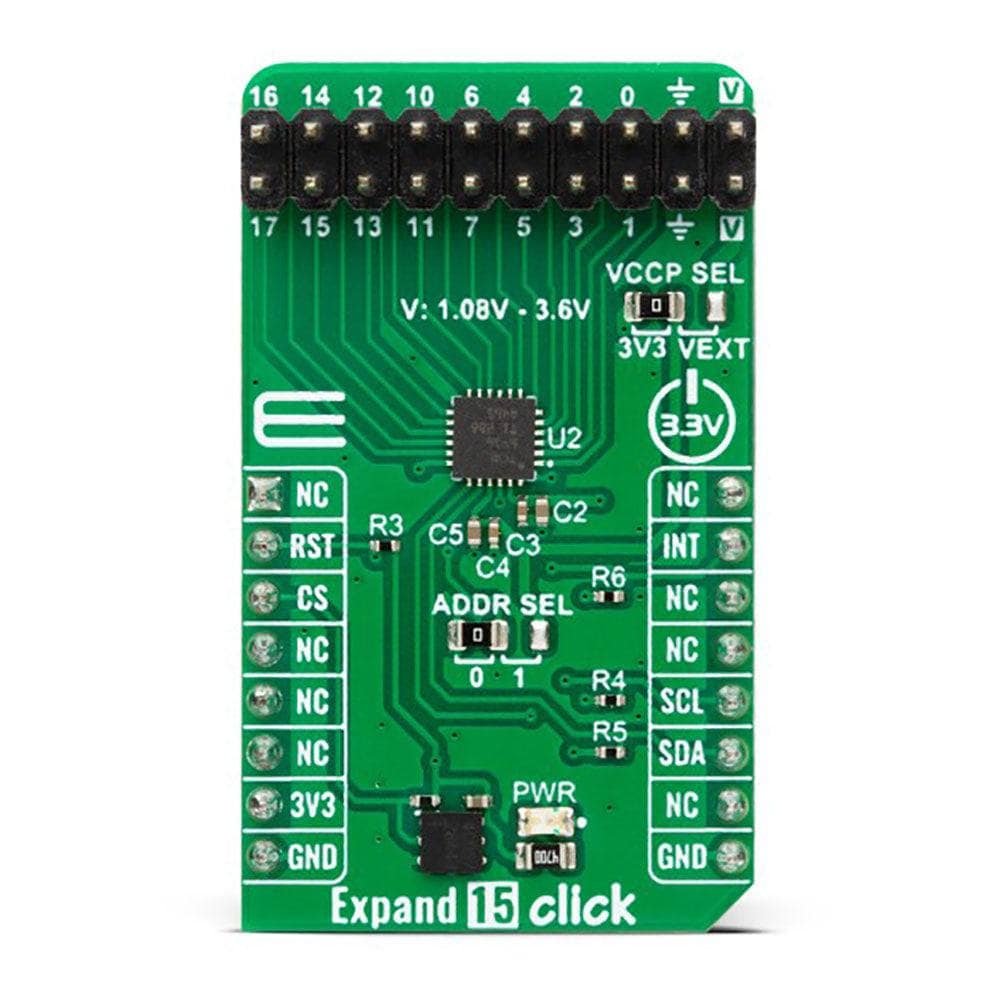
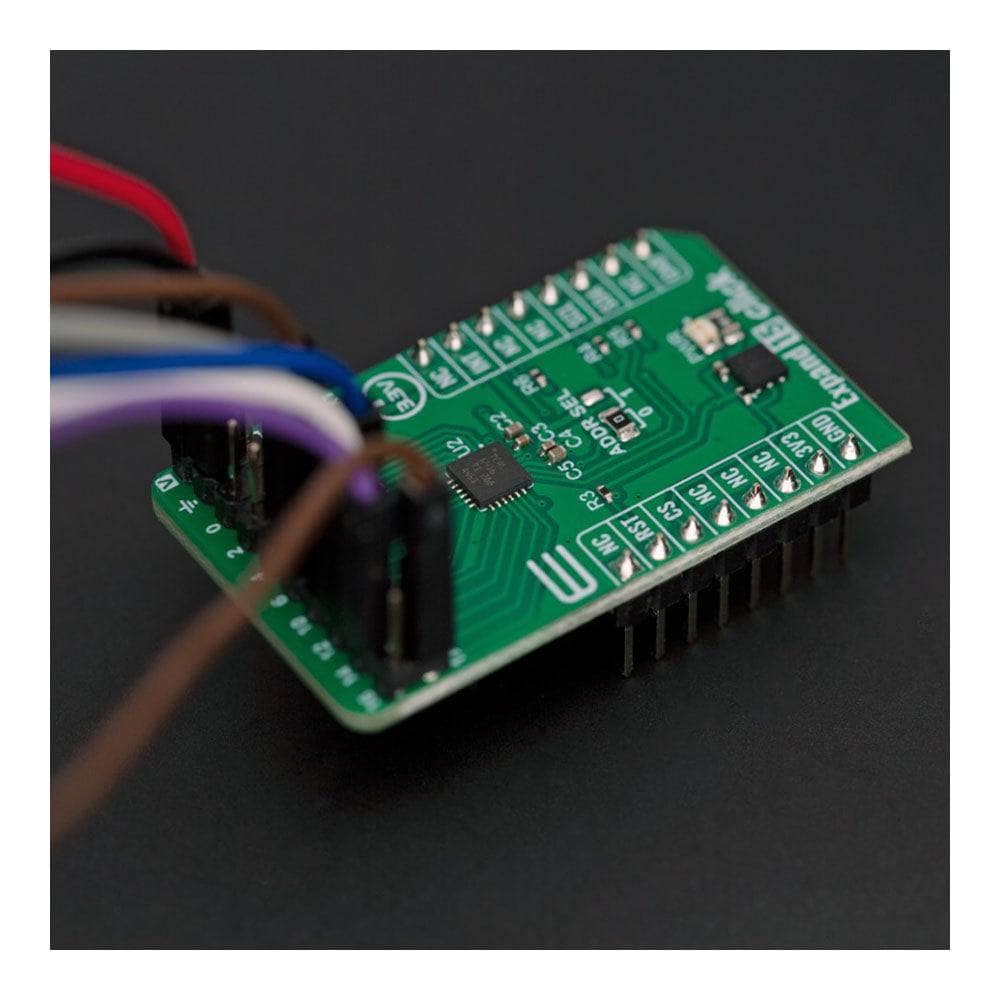
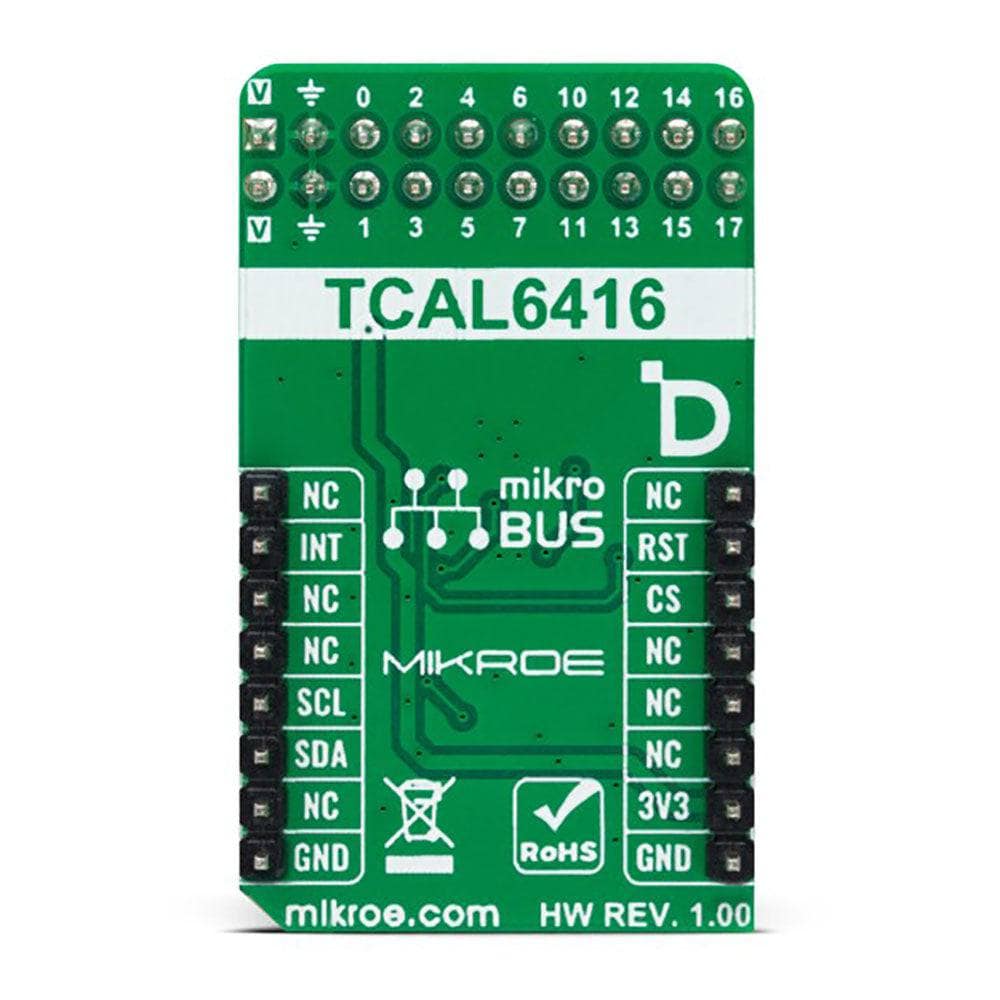
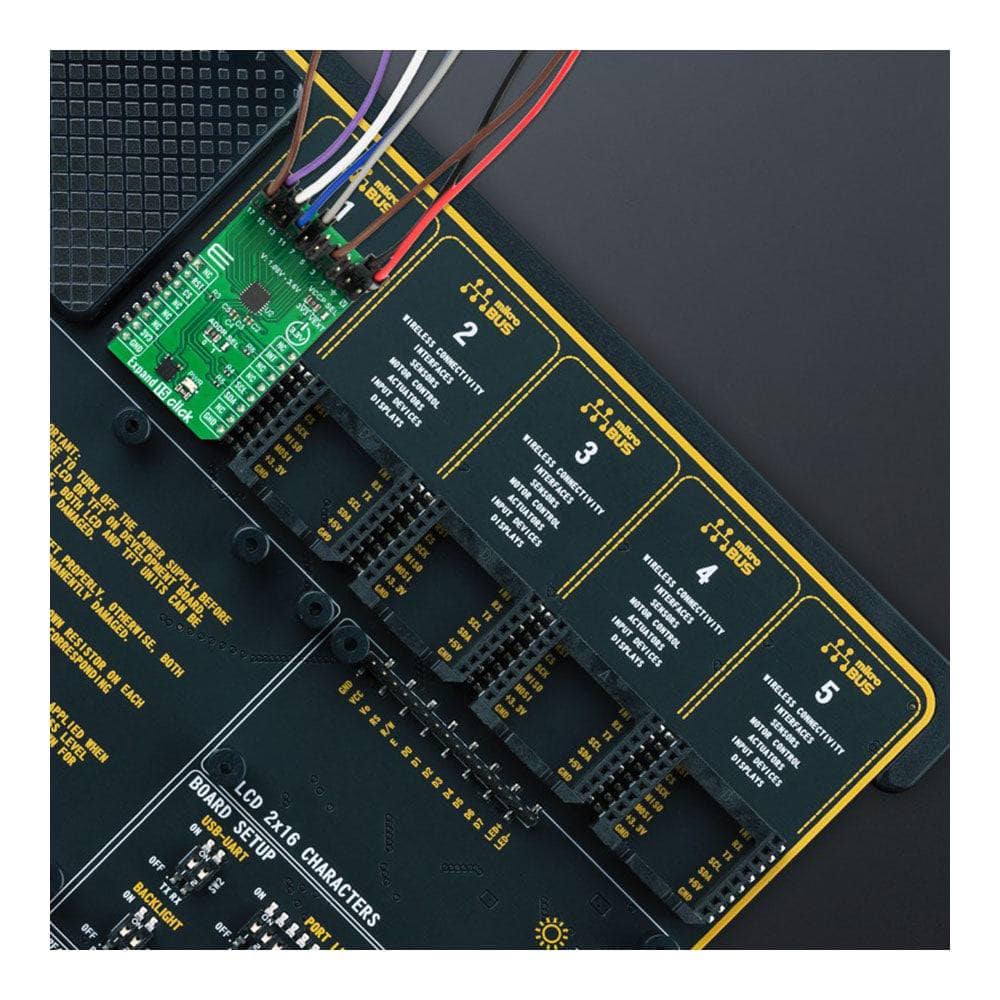
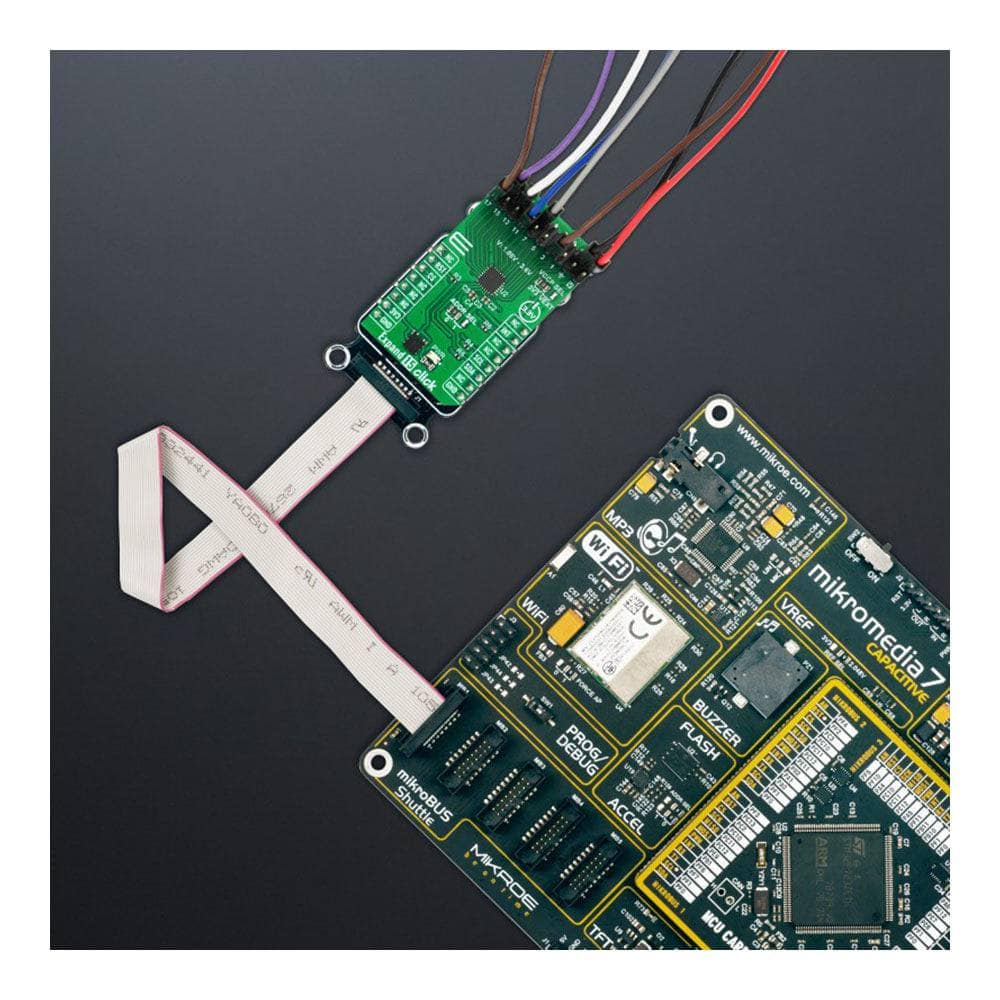
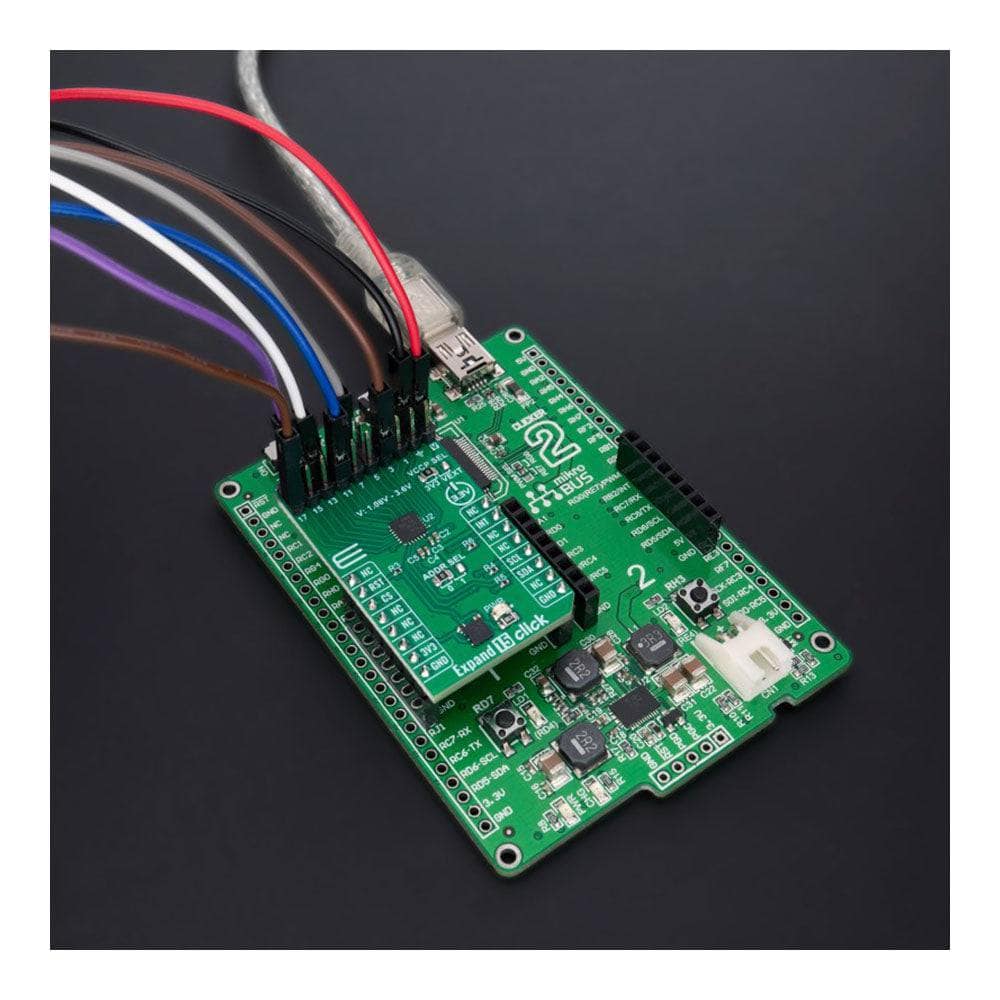
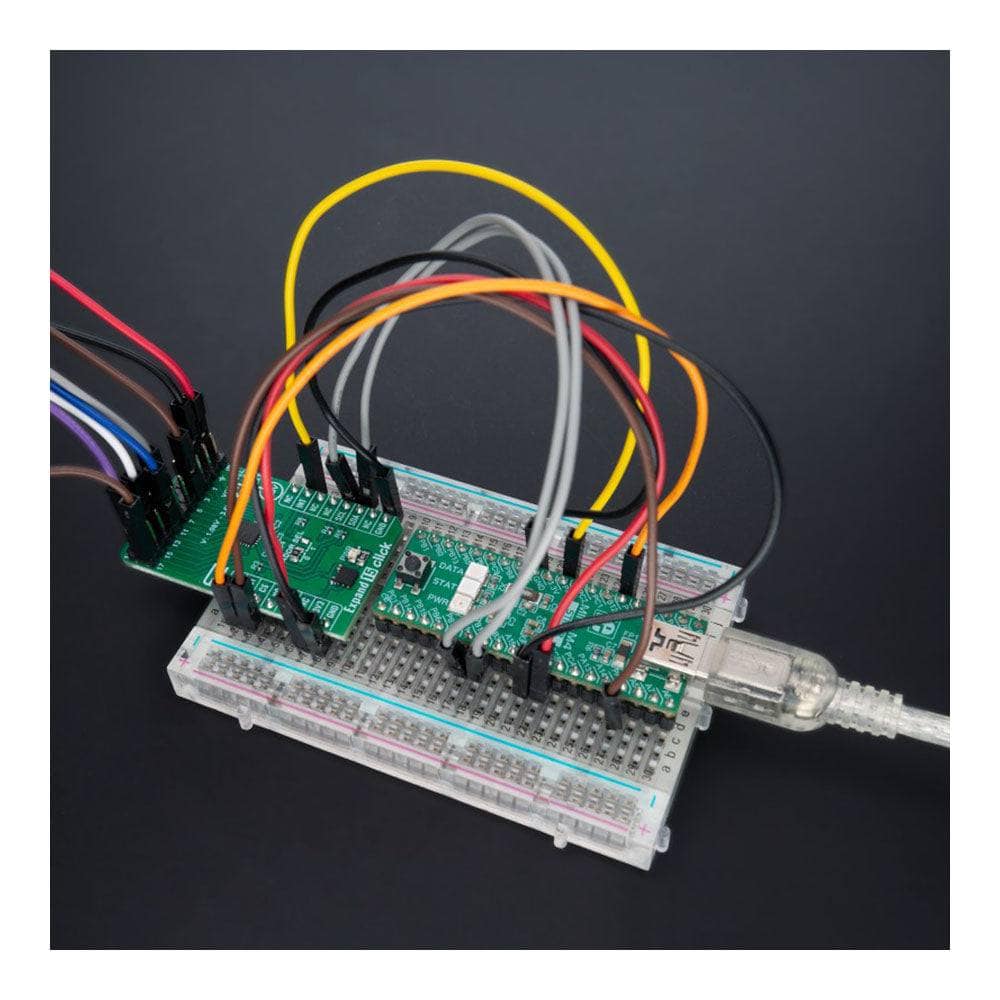
Key Features
Overview
Introducing the Expand 15 Click Board™: A Powerful Multi-Channel I/O Expander
Unleash the potential of your microcontroller with the Expand 15 Click Board™, a compact and versatile multi-channel I/O expander. This powerful add-on board features the TCAL6416, a high-quality general-purpose I/O expansion designed by Texas Instruments, compatible with most microcontroller families. Unlock unparalleled convenience and flexibility by easily adding I/O through the standard I2C serial interface.
Customizable and Feature-Rich for Maximum Versatility
The user-configurable P-port ensures seamless integration with your project's needs, allowing you to choose between logic input or output by adjusting the I/O configuration register bits. The Expand 15 Click Board™ boasts various additional features, including programmable output drive strength, pull-up and pull-down resistors, latchable inputs, maskable interrupt, interrupt status register, and programmable open-drain or push-pull outputs. It's the perfect solution for expanding your I/O capabilities for switches, sensors, push buttons, LEDs, fans, and more.
Effortless Software Development with mikroSDK Support
Streamline your software development process with the Expand 15 Click Board™, supported by a mikroSDK-compliant library. This library includes user-friendly functions that make software development a breeze. As a fully tested product, the Expand 15 Click Board™ is ready for immediate use on any system equipped with the mikroBUS™ socket. Enhance your projects and extend your microcontroller's capabilities with the Expand 15 Click Board™ today!
Downloads
Wir präsentieren das Expand 15 Click Board™: Ein leistungsstarker Mehrkanal-E/A-Expander
Entfesseln Sie das Potenzial Ihres Mikrocontrollers mit dem Expand 15 Click Board™, einem kompakten und vielseitigen Mehrkanal-E/A-Expander. Diese leistungsstarke Zusatzplatine verfügt über den TCAL6416, eine hochwertige, universelle E/A-Erweiterung von Texas Instruments, die mit den meisten Mikrocontrollerfamilien kompatibel ist. Profitieren Sie von beispiellosem Komfort und Flexibilität, indem Sie ganz einfach E/A über die standardmäßige serielle I2C-Schnittstelle hinzufügen.
Anpassbar und funktionsreich für maximale Vielseitigkeit
Der benutzerkonfigurierbare P-Port gewährleistet eine nahtlose Integration in die Anforderungen Ihres Projekts und ermöglicht Ihnen die Wahl zwischen Logikeingabe oder -ausgabe durch Anpassen der E/A-Konfigurationsregisterbits. Das Expand 15 Click Board™ bietet verschiedene zusätzliche Funktionen, darunter programmierbare Ausgangstreiberstärke, Pull-Up- und Pull-Down-Widerstände, verriegelbare Eingänge, maskierbarer Interrupt, Interrupt-Statusregister und programmierbare Open-Drain- oder Push-Pull-Ausgänge. Es ist die perfekte Lösung zur Erweiterung Ihrer E/A-Funktionen für Schalter, Sensoren, Drucktasten, LEDs, Lüfter und mehr.
Mühelose Softwareentwicklung mit mikroSDK-Unterstützung
Optimieren Sie Ihren Softwareentwicklungsprozess mit dem Expand 15 Click Board™, unterstützt durch eine mikroSDK-kompatible Bibliothek. Diese Bibliothek enthält benutzerfreundliche Funktionen, die die Softwareentwicklung zum Kinderspiel machen. Als vollständig getestetes Produkt ist das Expand 15 Click Board™ sofort einsatzbereit auf jedem System, das mit der mikroBUS™-Buchse ausgestattet ist. Verbessern Sie Ihre Projekte und erweitern Sie die Fähigkeiten Ihres Mikrocontrollers noch heute mit dem Expand 15 Click Board™!
| General Information | |
|---|---|
Part Number (SKU) |
MIKROE-5679
|
Manufacturer |
|
| Physical and Mechanical | |
Weight |
0.02 kg
|
| Other | |
Country of Origin |
|
HS Code Customs Tariff code
|
|
EAN |
8606027384790
|
Warranty |
|
Frequently Asked Questions
Have a Question?
-
Is the Expand 15 Click Board™ easy to use?
Yes, the Expand 15 Click Board™ is easy to use. It comes with a mikroSDK-compliant library that includes functions to simplify software development. The board is also fully tested and ready for use on a system equipped with the mikroBUS™ socket.
-
What applications can the Expand 15 Click Board™ be used for?
The Expand 15 Click Board™ is ideal for applications that require additional I/Os, such as switches, sensors, push-buttons, LEDs, fans, and more.
-
What additional features does the TCAL6416 offer?
The TCAL6416 offers programmable output drive strength, pull-up and pull-down resistors, latchable inputs, maskable interrupt, interrupt status register, and programmable open-drain or push-pull outputs.
-
What is the P-port configuration on the TCAL6416?
The TCAL6416 comes in one P-port configuration, which can be user-configured to either a logic input or output by writing to the I/O configuration register bits.
-
How does the Expand 15 Click Board™ connect to a microcontroller?
The Expand 15 Click Board™ connects to a microcontroller through a standard I2C serial interface.
-
What microcontroller families is the Expand 15 Click Board™ compatible with?
The Expand 15 Click Board™ is compatible with most microcontroller families.
-
What is the Expand 15 Click Board™?
The Expand 15 Click Board™ is a small add-on board that provides multi-channel I/O expansion for microcontrollers. It features the TCAL6416, a general-purpose I/O expander from Texas Instruments.








